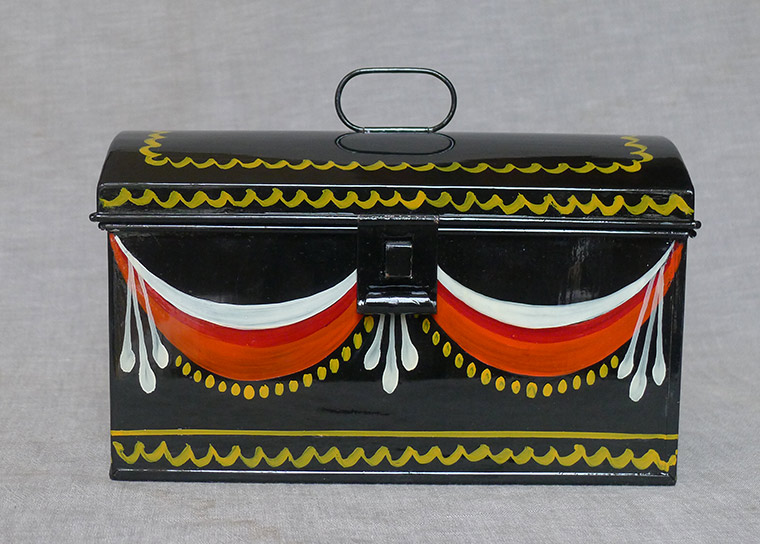I have been studying early American painted decoration since 2013. These decorations were composed mostly of floral motifs and rhythmic wavy brush stroked borders. There is freedom in having no agenda beyond making an object beautiful. As a guild member of the Historical Society for Early American Decoration I reproduce painted items that were made in the 1700s and 1800s. Much of this work was painted on household items made of tin, such as trays, trunks, tea caddies and coffee pots.
The elegant nature of this work is grounded in its naïve motif and strict use of materials. I continue to be challenged by this type of painting. The mark making is constant. I draw from this work a sense of intellectual abandonment. The simple nature of the patterns and designs allow the painter to practice on a fundamental level.
In the same way, the traditional textile craft of rug hooking entails a fundamental level of engagement with the material. The practitioner acquires the wool, choses a design and a color scheme, and fabricates a functional textile. It is this simple premise upon which a practice is built that appeals to me as a maker. As a member of the Rhode Island rug hooker’s group, “The Little Rhody Thrummers,” I have been involved on a long term basis with people who periodically get together to work and share ideas and techniques. Initially I became involved with this work because I inherited a hooked rug begun by my Grandmother in the 1930’s that was roughly 70% finished. I completed this rug in 2011 with the help of my rug hooking teacher, Dolores Bannister. Since then I have produced four large rugs. I design my own patterns and hand dye all the wool in many colors. This work fosters a temperament that allows one to physically understand the rigors of life prior to the age of industry.
Both of these genres have a social component. My study of the historical painting practice also includes a commiseration with others in order to execute the work. As a guild member, I am continually in contact with a group of people who have a shared interest, their goals being, simply, to make things beautiful and to preserve a historical tradition. It is this communal aspect of artistic research that allows me to work within a greater context. My identity is no longer the sole contributor to the process or to the product. I now consider myself to be a part of a continuum of artisans and craftspeople creating knowledge through practice.
